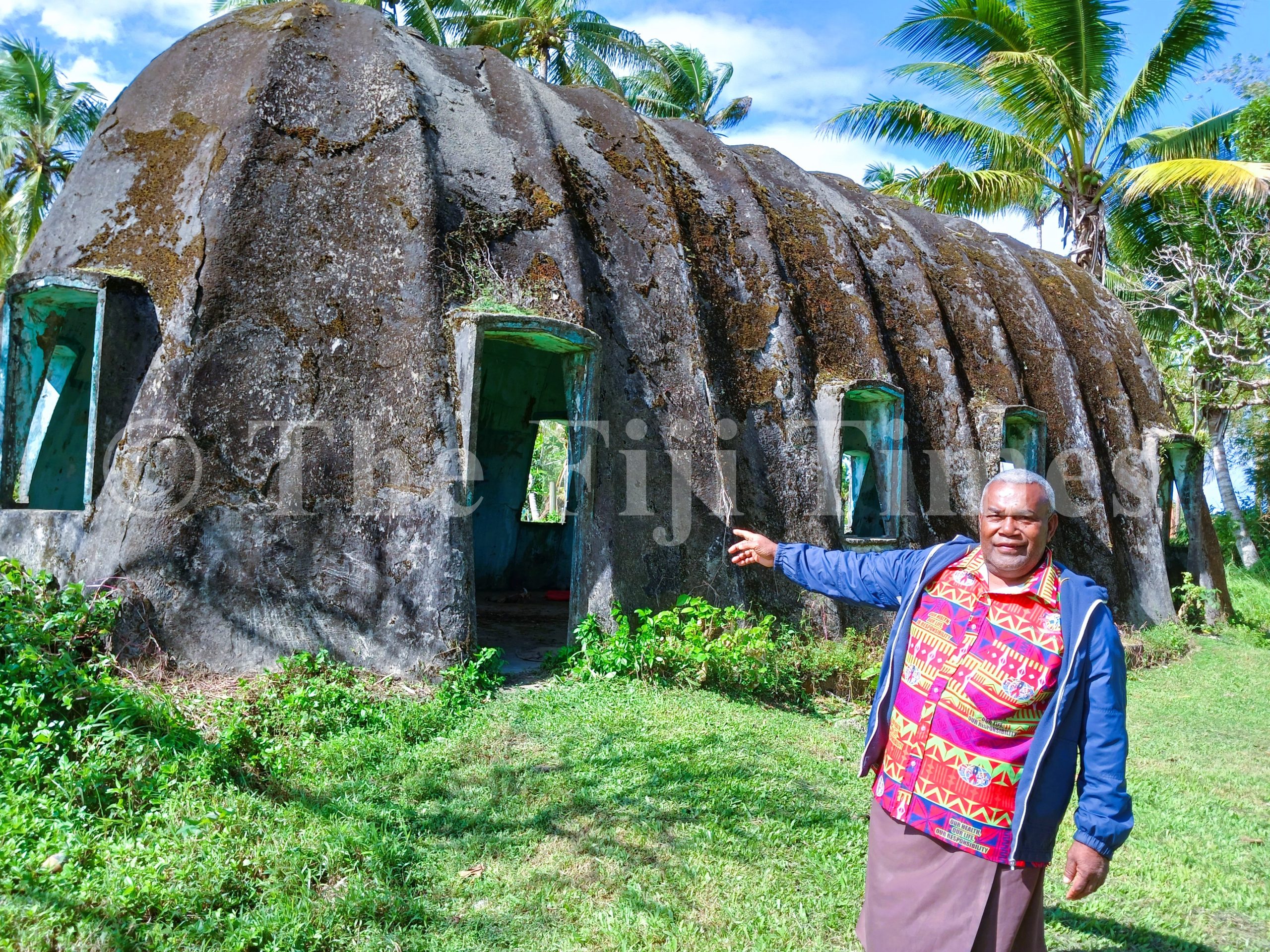Is it an igloo? Is it a dome? Can people live in it? These are probably some of the most common questions people would ask themselves when seeing an elephant house for the first time. Its curvaceous yet solid walls, high ceilings and arched windows make you feel like you’ve stepped back in time. Some may even find it a bit eerie but the fact is there are a few of these structures still standing tall today.
Two years ago, The Sunday Times featured one of these peculiarly-shaped houses, found in Raiwaqa, which was said to have been built in the early 1950s. And a few weeks ago, this newspaper visited Naililili Parish in the province to Rewa to find out a bit more about the dilapidated remains of its elephant houses. Iosevo Avimeleki Qionitoga of Waivou village in Rewa is someone who grew up hearing a bit of history about these buildings.

He is no stranger when it comes to sharing history and folklore as he often guides tourists who visit Naililili. According to the former chairman of Naililili’s church committee, the unique-looking elephant houses at Naililili have been vacant for years. Iosevo said by the time he attended primary school some 30 years ago, the elephant houses were virtually empty but they were previously occupied by priests and bishops.
“It was probably constrcuted by Marist Brothers who served in Naililili and helped in educating children in the area,” he said. Iosevo said there were two elephant houses built in Naililili. “The bishop lived in the bigger of the two structures while the rest of the priests lived in the second one,” Iosevo said, adding that sisters took over teaching once the brothers stopped.
He also spoke on what he knew about the shape of the building, saying he assumed it was to withstand unfavourable weather conditions like cyclones. “The first structure had two levels which allowed storage for fresh vegetables,” he said. “Comprising three bedrooms and a spacious living room, I was fortunate to have lived in the house with my wife and child.
We lived with a priest in the elephant house for a few years.” He said the second elephant house was just a few feet away from the first. It was divided into sections for the priests, while its kitchen unit was located outside.
“I believe these priests used the second house for resting while going to the larger one for other means such as to bathe,” he said. “Bishops and priests lived together hence the smaller of the two was used for resting while the kitchen and bathing area was built separately.” While the date on which the forgotten houses were built is unclear, Iosevo suggests it may have been after the completion of the Naililili cathedral in 1905.
And almost 119 years later, the second elephant house still stands. Iosevo said villagers extracted materials from the first house for renovation work in the cathedral amongst other things. The houses and the Nalilili cathedral are made of vatuvuso (coral rock) covered with cement.
“There were about two other elephant houses in Rewa,” he said. “While there have been discussions to renovate or rebuild the elephant houses as they are historical structures, this would require specific skill set and materials.” He said acquiring adequate funding was another issue.
He said improvements of the houses would be beneficial during village visits. “Educating villagers and visitors on the history of a particular place is very important as it forms a person’s identity and locale’s heritage,” he said. “This includes creating awareness of the meaning of Naililili.
” He said one of Naililili’s literal meaning in i-Taukei, is “a place where something is to be hung”. “The second definition includes to hang or strangle someone,” said Iosevo. “Interestingly, another reason could be the hanging of the bokola back in the day.
” Iosevo said the first rugby ball was said to have been kicked in Naililili, Lomanikoro, Rewa. Iosevo takes pride in knowing about his heritage and folklore and hopes other villagers and their leaders recognise the need to share or learn about history. The Naililili cathedral along with its elephant houses are located in Rewa, about five minutes boat ride from Nasali Landing, Wainibokasi Road.
Fr Dermot Hurley is believed to have built a few elephant houses in Raiwaqa beginning the 1950s. However, his bishop said they did not have impressive shapes, saying the houses were like an ‘upturned jam jar’. Fr Dermot replied by saying: “Beauty is in the eye of the beholder,” responded Dermot.
The Columban website noted that Fr Dermot later realised that ctesiphon buildings (elephant houses), noticeable for their arched shape and dome or shell roofs, were not the answer to Fiji’s housing problems. “Savings made were only about 10 per cent of the total cost of a conventional house in an urban area when sewerage, plumbing, electricity, floors, partitions, ceilings were to be provided,” the website said. “Besides, people wanted a conventional house with a better resale value.
But this ‘failure’ soon led to further involvement.”.



















